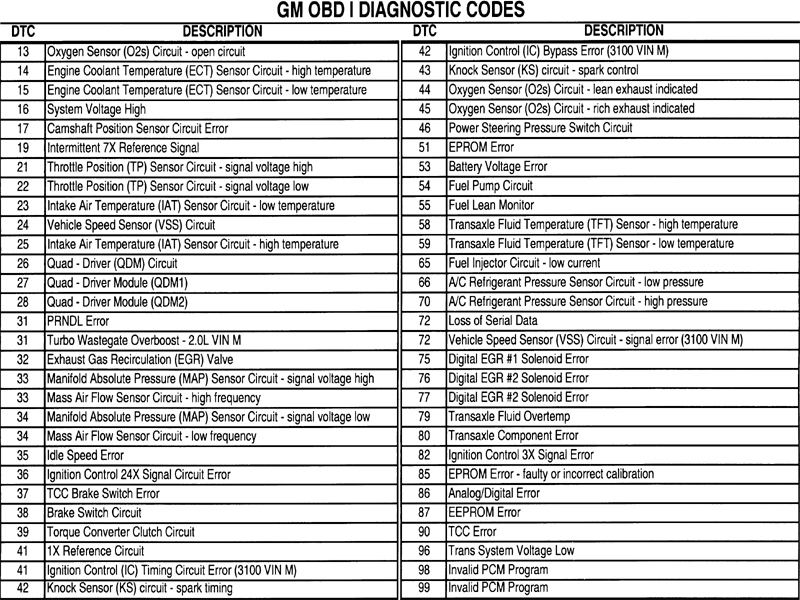That little yellow light on your dashboard, the check engine light, can be a source of both mystery and anxiety. What does it mean? Is it something serious? How do you make it go away? One of the first things many car owners want to know is how to clear check engine codes, and this guide is designed to demystify the process and empower you to take control.
Before diving into the how-to, it's crucial to understand what these codes represent. Your car's computer constantly monitors various systems, and when it detects a potential issue, it stores a diagnostic trouble code (DTC). These codes trigger the check engine light to illuminate, serving as a warning sign. Clearing these codes, therefore, doesn't necessarily fix the underlying problem; it simply resets the warning light.
Understanding the history of diagnostic trouble codes is essential to appreciating their significance. In the past, diagnosing car problems was a much more laborious process, involving mechanics manually checking various components. The introduction of onboard diagnostics (OBD) systems revolutionized car maintenance, providing a standardized way to identify issues. The OBD-II system, mandated in the United States for all cars manufactured after 1996, provides access to these codes via a standardized connector, usually located under the dashboard.
Clearing check engine codes can be done in a few ways. The most common method involves using an OBD-II scanner, a relatively inexpensive device that plugs into your car's diagnostic port. These scanners allow you to read and clear codes, providing valuable insight into the potential issue. Some cars also allow code clearing through specific key sequences or button combinations, though this varies by manufacturer.
However, it's important to emphasize that simply erasing the code without addressing the root cause is like silencing a fire alarm without putting out the fire. If the underlying issue persists, the check engine light will likely reappear. Therefore, it's generally recommended to diagnose the problem before clearing the codes. This can involve further investigation using the code as a starting point, or consulting with a qualified mechanic.
One benefit of clearing check engine codes is that it allows you to confirm whether a repair has been successful. After fixing the suspected issue, clearing the codes and seeing if they return can help verify the repair. Another benefit is resetting the system after a minor glitch. Sometimes, temporary issues can trigger codes that resolve themselves. Clearing the codes can provide a clean slate and prevent unnecessary worry.
Using an OBD-II scanner: Locate the OBD-II port, usually under the dashboard. Plug the scanner into the port. Turn on the ignition, but don't start the engine. Follow the scanner's instructions to read and clear the codes.
Advantages and Disadvantages of Clearing Check Engine Codes
Advantages and Disadvantages of Clearing Check Engine Codes
| Advantages | Disadvantages |
|---|---|
| Verify Repairs | Masks Underlying Problems |
| Reset After Minor Glitches | Potential Data Loss (Freeze Frame Data) |
| Peace of Mind (After a Proper Fix) | Could Void Warranty (If Done Improperly) |
Frequently Asked Questions
Q: Is it legal to clear check engine codes? A: Yes, clearing codes is legal, but it's essential to address the underlying issue.
Q: Will clearing codes reset my car's computer? A: Clearing codes does not reset the entire computer, only the stored diagnostic trouble codes.
Q: How much does an OBD-II scanner cost? A: Basic scanners can be purchased for around $20, while more advanced models can cost several hundred dollars.
Q: Can I clear codes without a scanner? A: Sometimes, this is possible using key sequences, but it depends on the car's make and model.
Q: How do I find the OBD-II port? A: It's usually located under the dashboard, near the steering wheel.
Q: Will disconnecting the battery clear codes? A: Yes, disconnecting the battery can sometimes clear codes, but it's not the recommended method.
Q: What if the code returns after clearing it? A: This indicates the underlying issue hasn't been resolved and further diagnosis is required.
Q: Can I drive with the check engine light on? A: While possible, it's advisable to address the issue promptly, as it could indicate a serious problem.
In conclusion, understanding how to clear check engine codes is a valuable skill for any car owner. While it allows for verifying repairs and resetting the system after minor glitches, it's crucial to remember that addressing the underlying issue is paramount. Using an OBD-II scanner is the recommended method for clearing codes and diagnosing problems. By combining this knowledge with proactive maintenance, you can keep your car running smoothly and avoid potential headaches down the road. Don't ignore that warning light – take control of your car's health and address those codes responsibly.
Mental wellness in racine exploring st lukes behavioral health
Yamaha outboard motor lifting eye your essential guide
Demetrius ivory and erin mcelroy
Shaking Engine And Check Engine Light - Khao Tick On
Will Engine Codes Clear Themselves - Khao Tick On
How To Check Engine Light Codes Without A Scanner - Khao Tick On
Check Engine Light Isuzu Rodeo - Khao Tick On
Bmw X5 Check Engine Light Reset - Khao Tick On
Check Engine Codes Gmc Sierra - Khao Tick On
Get Reset Clear Subaru Check Engine Light Codes without Scanner or - Khao Tick On
Chevy Silverado Check Engine Light Codes - Khao Tick On
Nissan Check Engine Light Reset - Khao Tick On
How To Clear OBD2 Codes Without A Scanner - Khao Tick On
how do you clear check engine codes - Khao Tick On
Car Diagnostic Codes For Honda 2007 Pilot - Khao Tick On
How To Reset Check Engine Light Nissan Frontier - Khao Tick On
How Do You Clear A Check Engine Light - Khao Tick On
How to check ford engine codes without a scanner - Khao Tick On














